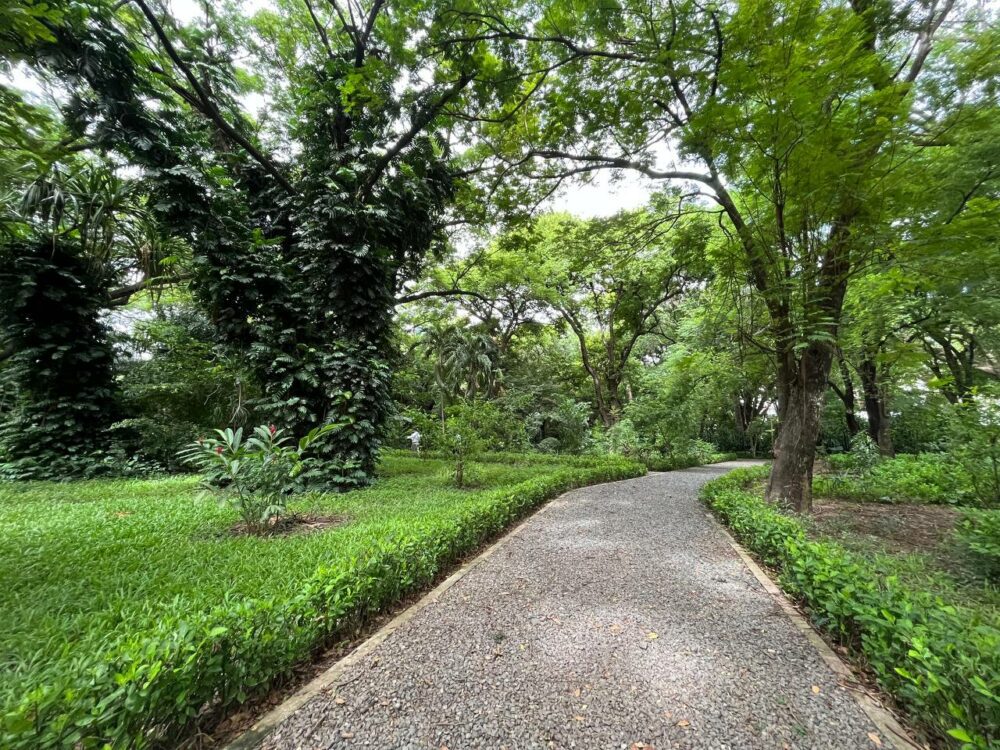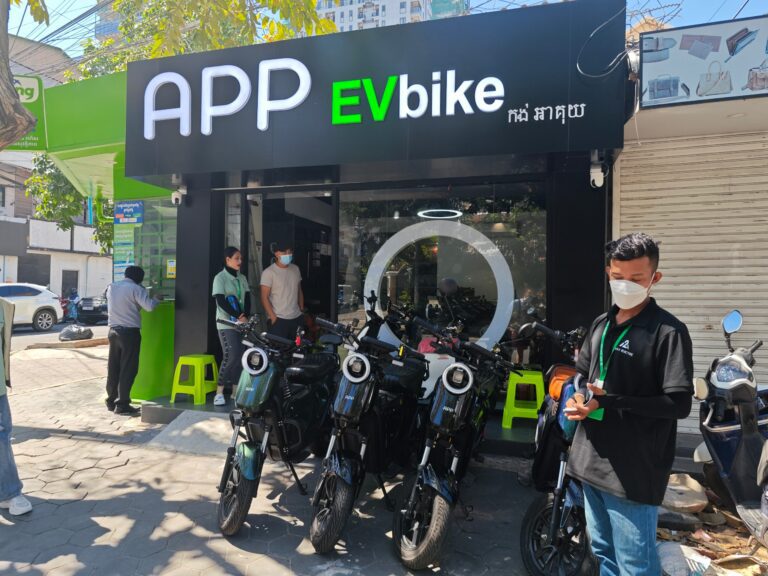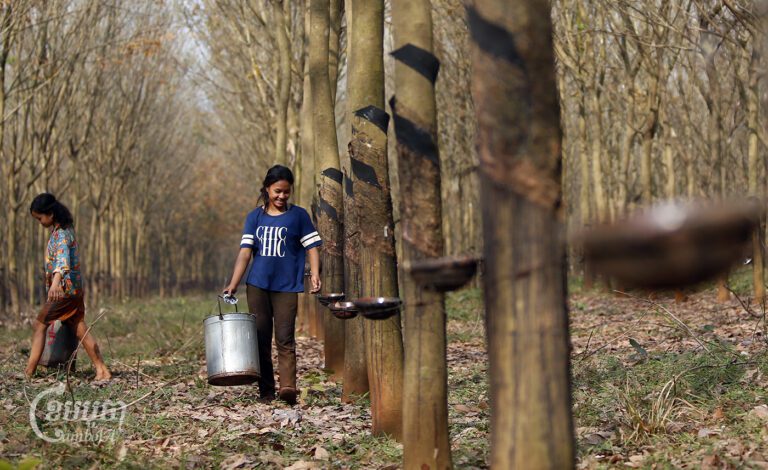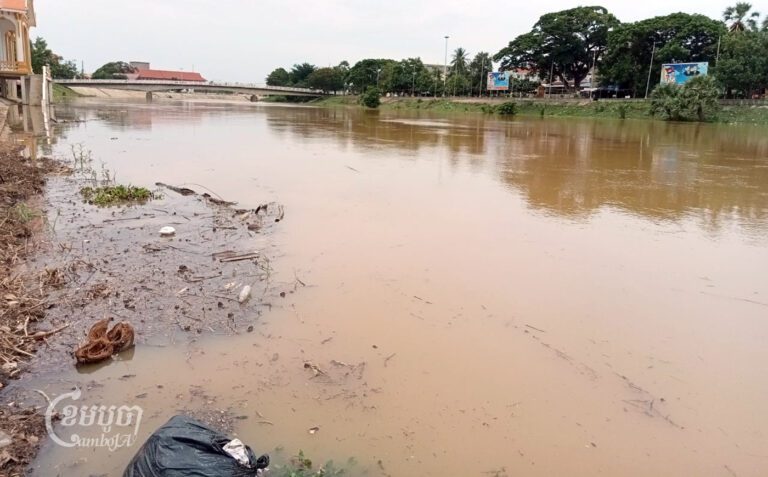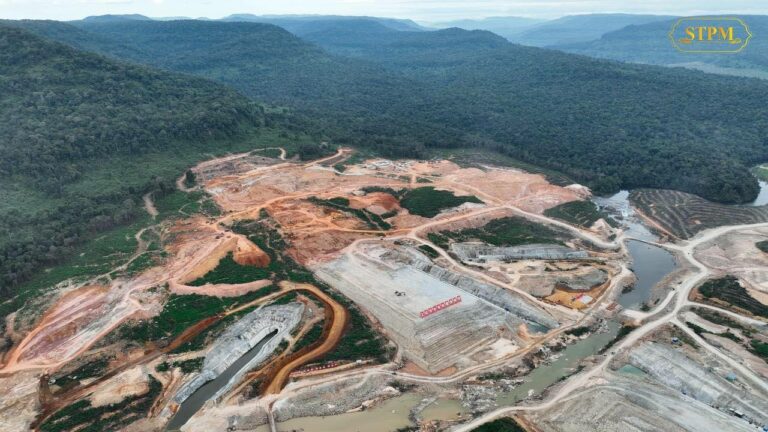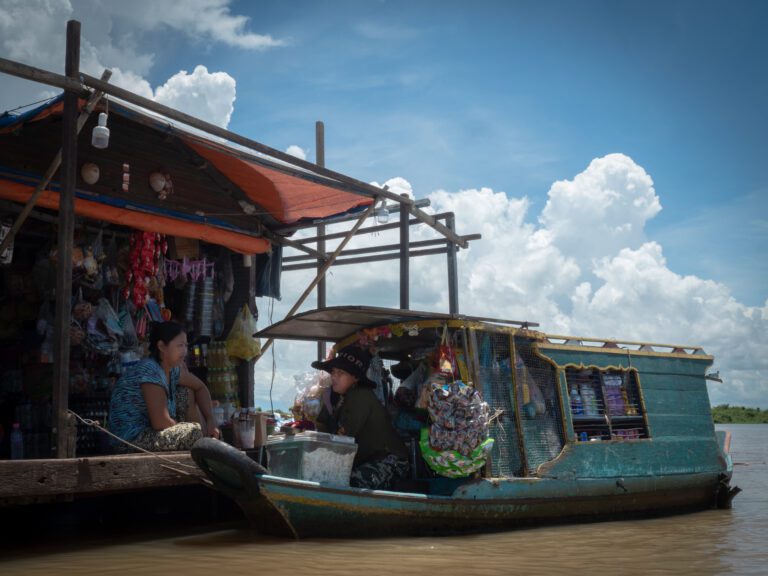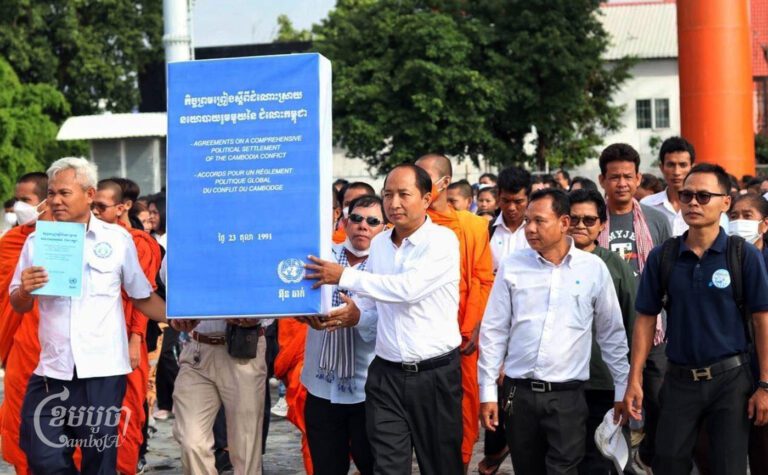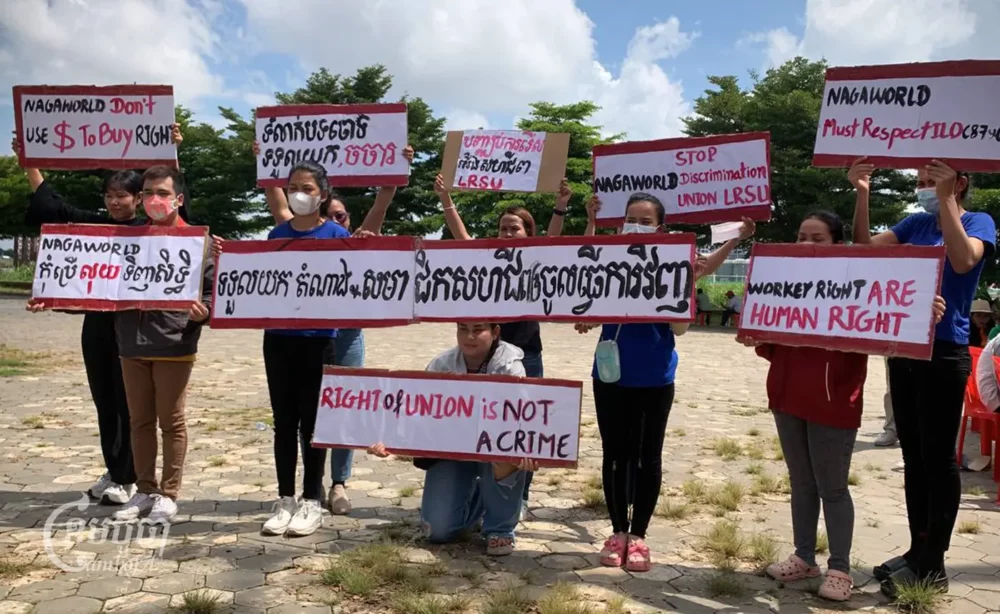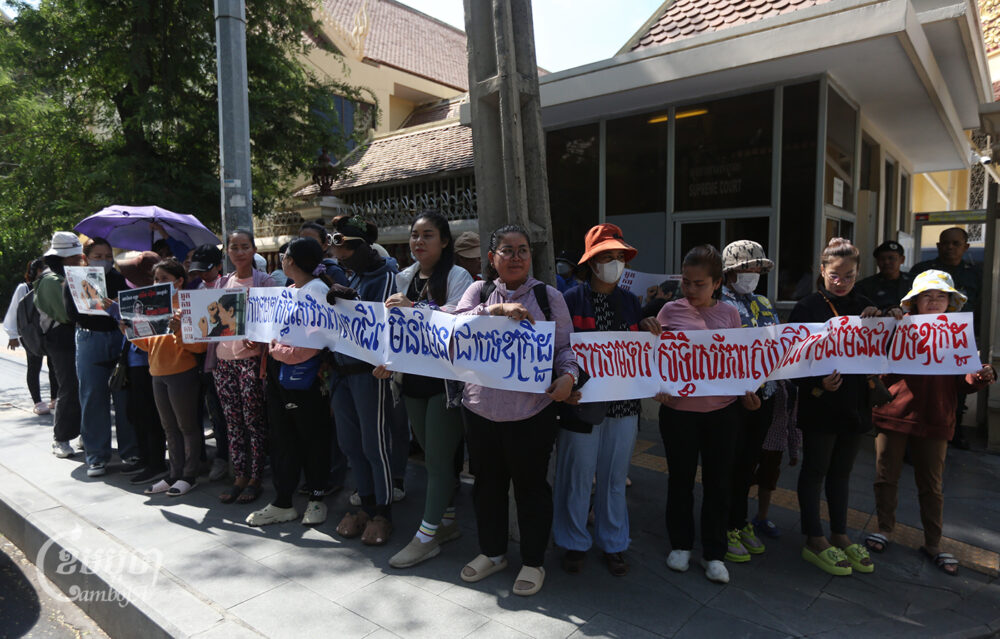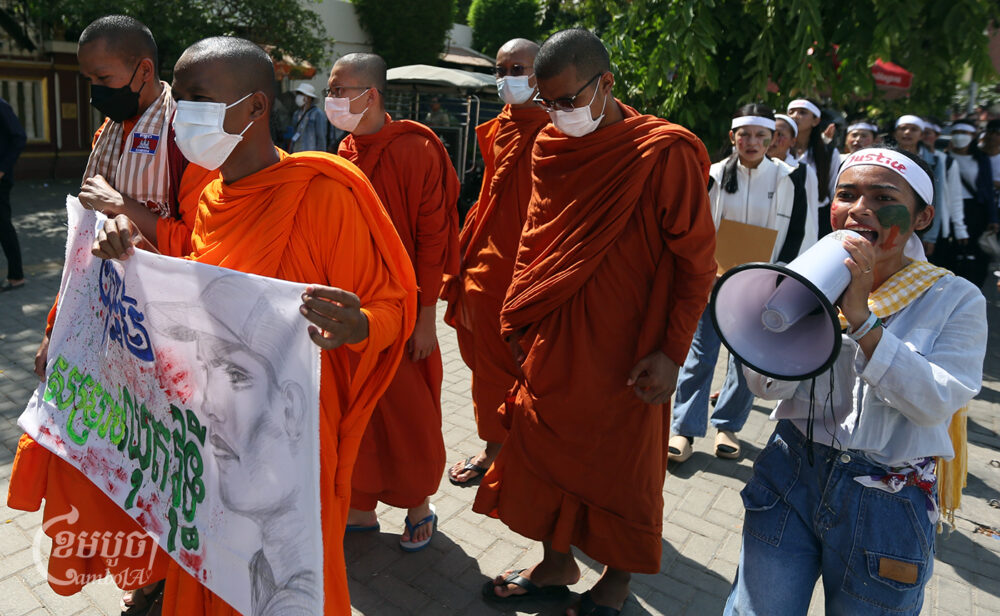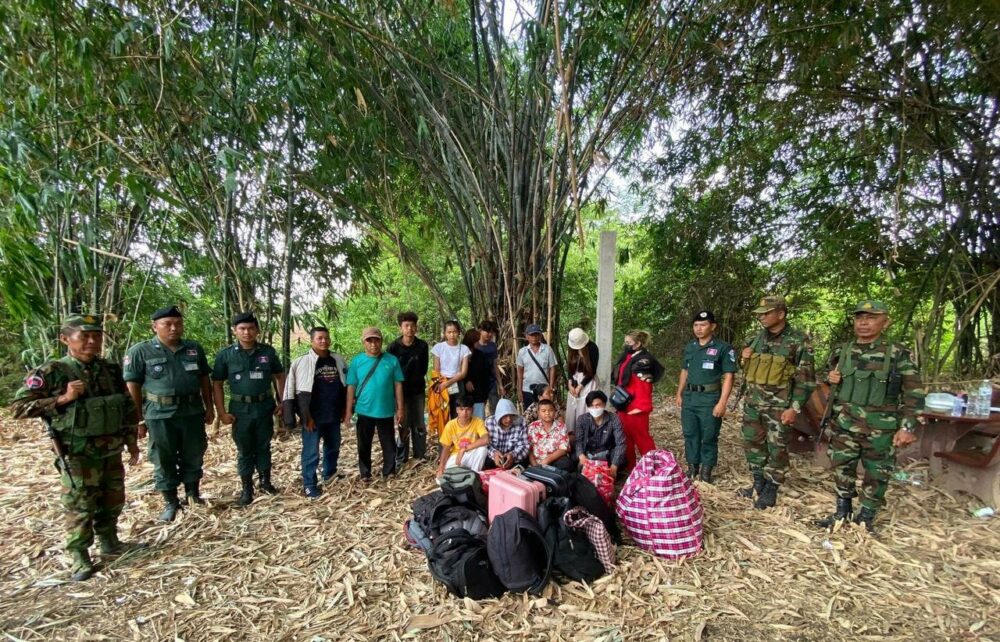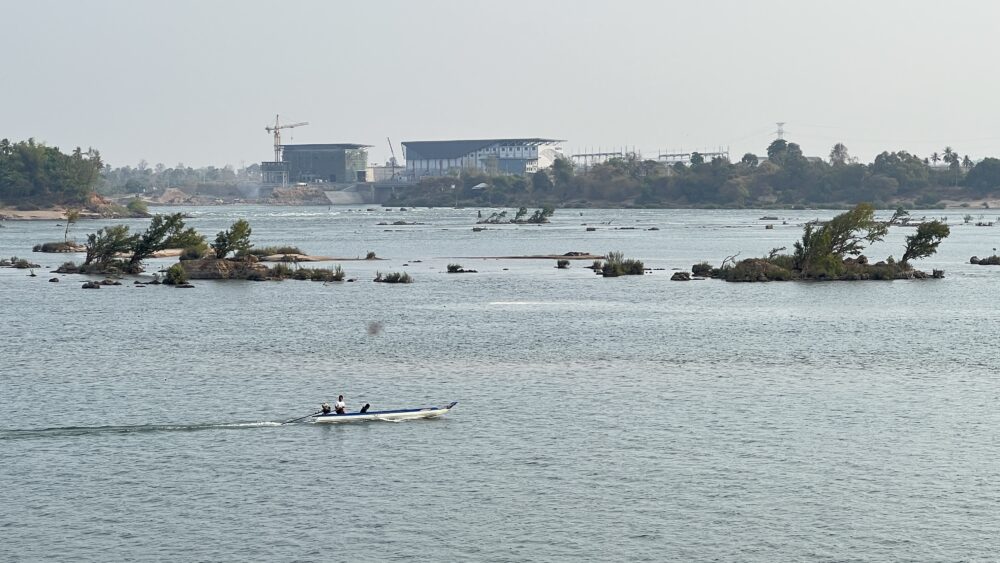A rusted gate, torn from its fence decades ago by the Khmer Rouge, stands lonely as a silent monument inside a circle of hedges. Standing in front of it, surrounded by lush greenery and winding gravel pathways, the hustle and bustle of the city seems far away: just a distant drone underneath the sounds of rustling leaves and birdsong.
The vast majority of Phnom Penh residents have never seen the inside of this peaceful oasis and many have no idea that it exists. Yet these meticulously maintained botanical gardens are located in the heart of the city, a few streets away from the riverside and just off of Monivong Boulevard.
Despite the dense urban environment around it, the 4.7 hectare park is a sanctuary of biodiversity, with over 50 species of trees. However, it is sometimes visited more by exotic wildlife, like monkeys and great hornbills, than it is by humans, who are unable to climb the highly secured spiked walls surrounding it. This is because the park is part of the Embassy of France, and closed to the public except for a few days of the year — including on September 16 and likely again in October for a cultural festival.
But on most days, the park is only seen by the approximately 60 embassy staff members, 11 gardeners, and selected guests, even as many Phnom Penh residents long for more green spaces and some argue the embassy’s park should be more accessible.
“I have heard that there are big trees and remnants of history inside, though I have never seen it myself,” said Roun Reay, 40, a motorbike driver who has been working around the French Embassy for over 10 years.

It has been widely noted that as Phnom Penh has boomed in the last decades, one of the unfortunate byproducts has been the disappearance of its green spaces through rampant, loosely regulated real estate development and a lack of input from local communities. These days, the French Embassy holds a significant amount of the city’s remaining urban green space.
While downtown Phnom Penh does feature planted trees on its roadsides, and a few popular public parks such as Wat Phnom and and Wat Botum, it does not have sprawling parks equivalent to Bangkok’s Rama IX National Park, or Ho Chi Minh City’s Tao Dan Park. A UN Department of Development study found that Phnom Penh has about 0.67 square metres of public space per resident. For comparison, Bangkok has 7.0 square metres, and Paris has 10.8.
“It’s a real issue — it’s an issue of urban planning,” said Noémie Pinta, the embassy’s spokesperson and political councillor, lamenting the lack of green spaces in the city available to the public.

Pinta noted that the French government has worked on and funded many projects to improve quality of life in the city, including the renovation of Central Market in 2009, which cost over $4 million. The embassy is working to support better urban planning and more green spaces.
Pinta told CamboJA that she understood why someone might feel frustrated that such a well-maintained park remains restricted to the public.
“We have such a large space, and the ambassador [Jacques Pellet] is keen to show it,” she said, pointing out that last year over 2,000 visitors came to see the park during European Heritage Day in September, for which the embassy has opened the park every year since 2015. Hundreds of students from around Cambodia who study in French schools have also been invited to the embassy to take tours of the grounds, as well as other guests.

One Phnom Penh resident, 34-year-old Sophal Thin, attended an art exhibition in the park on one of its rare open days in 2020 and was very impressed by what he saw. Educated as an architect, he has mostly specialised in landscaping. In part inspired by the French Embassy’s park, Thin earlier this year opened Maloop, a 0.5 hectare semi-public park containing gardens, a bar, and a restaurant (the expectation is that visitors purchase food or beverage). Thin told CamboJA that the French Embassy Park was one of his inspirations.

Maloop is just one of a series of privately owned, semi-public parks which have opened in Phnom Penh in the last few years. Other larger examples include Coconut Park (1.2 hectares), Trillion Park (1.6 hectares), and the recently opened Khete, a small garden inside of a downtown alleyway.
Thin has said that while semi-public parks were very popular with the public, they could not entirely replace completely public ones.

“Families come with their own food and drinks,” he said. “I don’t like telling them they can’t. We are semi-public. We need to sustain ourselves.”
“People want to enjoy an outdoor space with no pressure to buy things,” he added.
Thin said he hoped that the new faces in government would be more willing to commit resources to creating green spaces.
Aronsakda Ses, a junior researcher at Future Forum specialising in urban planning, told CamboJA that expanding access to an existing green space like the French Embassy Park would improve life for city residents.
“If the French Embassy can be convinced to be open more often, then we will see the more human sided benefits come into play…” Ses said. “Let’s not underestimate the importance of the social interaction enabled by public spaces. It can help bring people together, create more trust among citizens, and lead to a more cohesive society.”
Ses pointed out that the French Embassy Park already brings benefits to the city even without visitors, such as reducing urban heat, filtering air pollution and absorbing rain water. According to a 2020 study on land surface temperatures in Phnom Penh by Gulam Mohiuddin with IT for Forest, the areas around Wat Phnom and the French Embassy Parks were notably cooler when examined with thermal remote sensors.

“If it were to be open to the public, then more direct benefits can be enjoyed by the public, a gathering point for social and cultural activities, economic activities, etc,” Ses told CamboJA.
“We do it [let people into the park] as often as we can,” said Pinta, the French Embassy official, noting that there were many security and logistical hurdles every time they had an open day. When CamboJA reporters were invited to walk around the grounds, an armed security officer accompanied them.
“We can’t cut it [the embassy] to pieces,” said Pinta, regarding separating the park from the embassy with a fence. While the southern gate of the compound goes directly into the park, bypassing diplomatic buildings, Pinta said it would not be possible for the park to be separated from the embassy due to security concerns and international laws and declined to elaborate further, saying it was a “non-issue.”
Former Indian ambassador to Germany, Professor Kishan Rana, author of The Contemporary Embassy: Paths to Diplomatic Excellence, and several other books about diplomatic protocol, said he believed that it was entirely possible for the embassy to open the park more regularly.
“My impression is that if a country wants to hand over embassy property, and return it to the host country, it can do so. Equally, it can open up that garden to the public,” Rana said in an emailed statement, while acknowledging embassy safety concerns.

Most embassies around the world strictly limit access, and many with large compounds in Phnom Penh do not have open public access at all. The Russian Embassy in Phnom Penh also features a large green area completely off-limits to the public, albeit surrounded by embassy buildings. (CamboJA was unable to reach the Russian Embassy).
But elsewhere, some embassies do have green spaces regularly open to the public: the Canadian Embassy in Tokyo allows the public to take unsupervised tours of its gardens and other facilities, and in 2010 the Japanese Embassy in London opened its doors for visitors to its zen garden on weekdays through the Summer months. (Both require ID cards to enter).
Noting that Cambodia was a French protectorate from 1863 to 1953, Rana also argues that “it is immoral for a departing colonial power to retain for itself, special positions of privilege, in terms of property or other historical assets…”
Up until Cambodia’s independence, the French government’s High Commissioner and staff resided in a specially constructed hotel whose construction was at least partly funded by colonial taxes on the Indochinese population.
After France agreed to withdraw, the Cambodian government asked for this property back, and an agreement was made in which the French vacated the hotel in exchange for the piece of land where its embassy sits today. The former High Commissioner’s hotel, located next to Wat Phnom, is now used by the Council for Development of Cambodia.

For some city residents, like 23-year-old university student Kim Heang, the park’s brief public openings are a treat but also a reminder of what is often missing from daily life. Heang, who has only seen the park in pictures and videos, said she is determined to visit on Saturday, but wishes she could have the chance to go more often.
“I hope that one day, if the French Embassy is open to the public, it will be a good thing because this is a natural area in the city,” she said.
Additional reporting by Pok Ponlue


